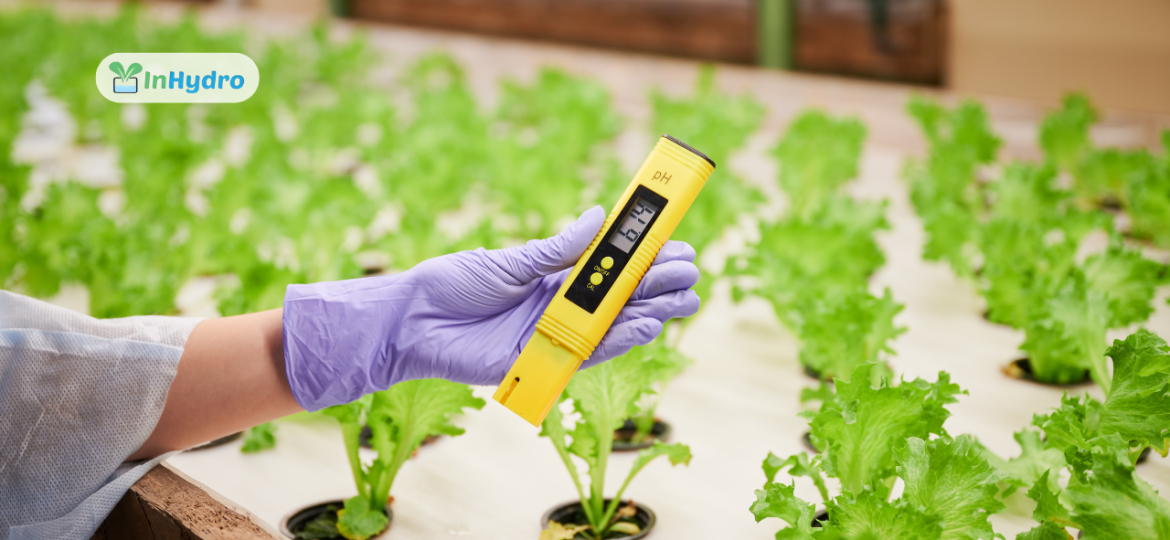
How to Set Up Smart Sensors for Hydroponic Farms
The incorporation of farm automation in hydroponics has revolutionized modern agriculture, introducing unprecedented levels of precision, efficiency, and sustainability. In today’s competitive landscape, smart sensors have become an indispensable part of hydroponic farm layouts, enabling growers to monitor vital parameters, automate processes, and optimize resources. At InHydro, we bring cutting-edge solutions that simplify hydroponic farm maintenance and elevate productivity.
This guide explores how to set up smart sensors for your hydroponic system, leveraging advanced technology in hydroponic farms to achieve exceptional results.
Understand the Role of Smart Sensors
Smart sensors are the backbone of precision farming technology, allowing growers to collect and analyze real-time data. By implementing sensors, you can maintain ideal growing conditions and address challenges proactively.
Key Monitoring Aspects:
- Nutrient Concentration: Avoid deficiencies or excesses with EC and nutrient sensors.
- Environmental Metrics: Measure temperature, light, and humidity levels to ensure plant health.
- System Flow: Monitor water flow in automation in Dutch bucket systems and other irrigation setups.
- pH Stability: Keep pH levels within the optimal range for nutrient absorption.
The insights gained from these metrics enable growers to refine their hydroponic farm maintenance strategies.
Prioritize Customization for Your System
Not all hydroponic setups require the same types of sensors. Tailor your approach to align with the needs of your farm—whether it’s a small-scale operation or a commercial facility.
Examples of Sensors Based on System Type:
- For Dutch Bucket Systems: Flow sensors to automate irrigation and nutrient delivery.
- For NFT Systems: EC, pH, and water level sensors to ensure nutrient film consistency.
- For Indoor Farms: Temperature and humidity sensors integrated with IoT in agriculture platforms.
Choosing the right tools ensures your sensors address the specific challenges of your farm’s layout and crops.
Integrate Advanced Technologies
Integrating smart sensors with greenhouse automation systems amplifies their utility, allowing you to automate repetitive tasks and receive actionable insights.
Technologies to Leverage:
- IoT Devices: Connect sensors to a centralized system for seamless monitoring.
- Cloud Analytics: Store and analyze data trends to improve decision-making.
- Smart Controllers: Automatically adjust temperature, light, and irrigation based on sensor readings.
At InHydro, our smart solutions enable seamless connectivity between devices, creating truly automated indoor farming automation ecosystems.
Plan Sensor Placement Strategically
Optimal sensor placement is critical for collecting accurate data. Thoughtful positioning ensures comprehensive monitoring and minimizes blind spots.
Placement Tips:
- Place pH and nutrient sensors near the main reservoir for precise readings.
- Position humidity and temperature sensors at canopy level for accuracy.
- Install flow sensors at key junctions in automated irrigation pipelines.
Proper placement enhances the reliability of your sensors, providing actionable insights for hydroponic farm layouts and operations.
Automate Workflow for Efficiency
Automation enhances resource management, reduces manual intervention, and ensures consistency in operations.
Automated Solutions:
- Irrigation Control: Timers and flow sensors regulate water delivery efficiently.
- Climate Regulation: Link temperature and humidity sensors to automated HVAC systems.
- Nutrient Dispensing: Use nutrient sensors to maintain precise concentrations in real time.
By automating these tasks, growers can focus on scaling production while reducing operational complexities.
Analyze Data for Continuous Improvement
Smart sensors generate a wealth of data that can be analyzed to identify inefficiencies, forecast challenges, and optimize processes.
Utilize Data Effectively:
- Detect trends to anticipate seasonal shifts in environmental conditions.
- Evaluate sensor data to improve hydroponic farm maintenance schedules.
- Experiment with system tweaks, like adjusting water flow rates in Dutch bucket setups, to enhance crop performance.
At InHydro, we help growers unlock the full potential of their sensor systems, delivering measurable improvements in efficiency and sustainability.
Embrace InHydro’s Expertise
Setting up smart sensors is not just about technology; it’s about building a system that works seamlessly to support your farming goals. At InHydro, we offer customized solutions for farm automation in hydroponics, including consultation, installation, and maintenance services. Our expertise in hydroponic farm layouts and precision farming technology ensures that your farm operates at peak efficiency.
Partner with InHydro to transform your hydroponic farm into a high-tech, data-driven operation. Experience the future of farming today.

